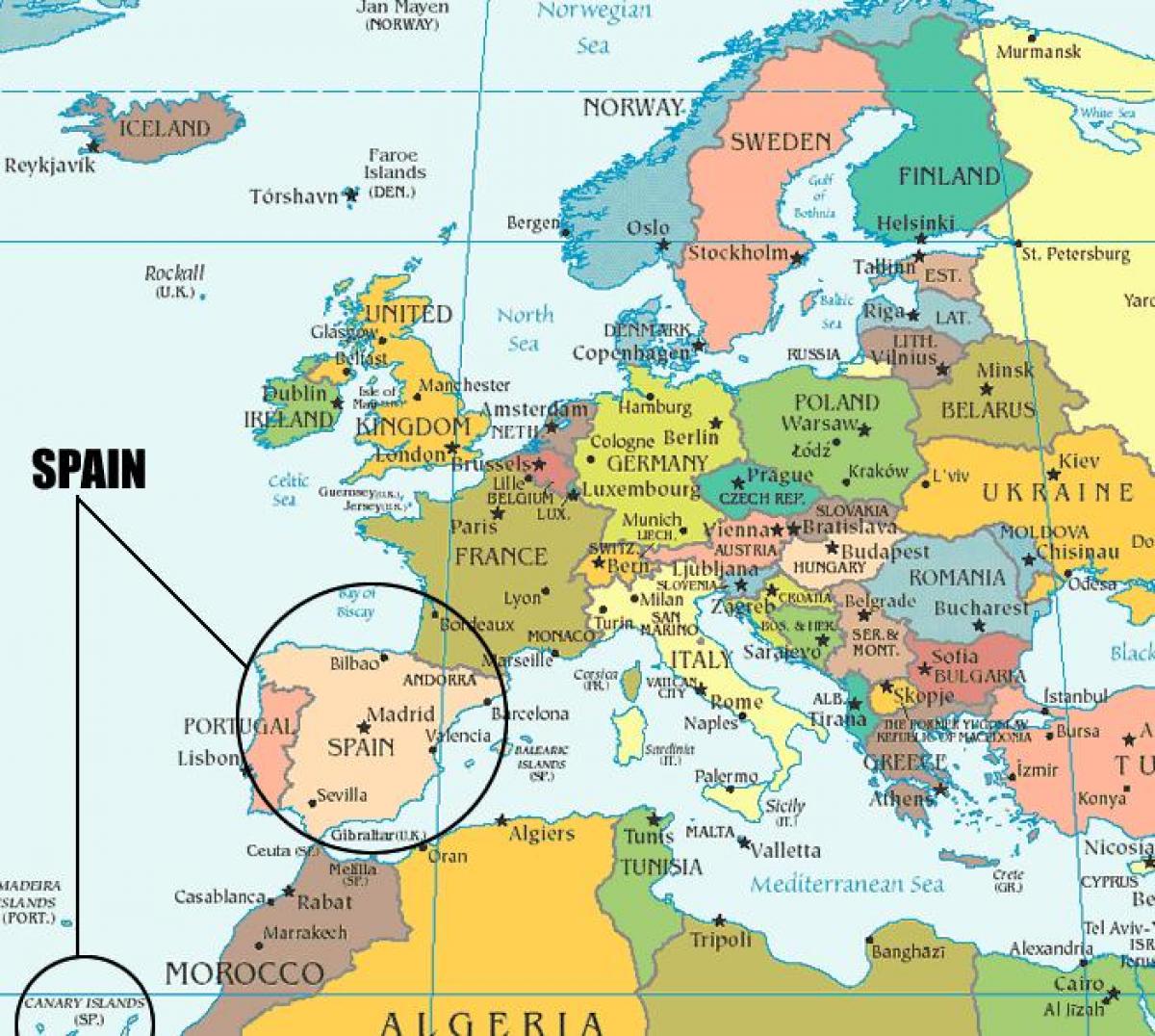search
Spain on a map
Map with Spain. Spain on a map (Southern Europe - Europe) to print. Spain on a map (Southern Europe - Europe) to download. The current system of education in Spain is known as LOE after the Ley Orgánica de Educación, or Fundamental Law of Education. Education in Spain is compulsory, and free from 6 to 16 years of age, supported by the Government in each Region as its shown in Spain on a map. Children 3 to 6 years old in [Spain] have the option of attending the Pre-school stage (infantil or popularly known as preescolar), which is non-compulsory and free for all students. It is regarded as an integral part of the education system with infants classes at almost every primary school. There are some separate nursery schools (Colegios Infantiles).
In Spain you easily encounter mules and merino sheep especially in the highlands and in many place you will see are lizards and wall geckos. The Mediterranean or Iberian lynx, however, is almost extinct, there are only a few surviving mammals left in the south of Spain and Portugal. The lynx is the most endangered cat in the world as its mentioned in Spain on a map. Other protected animals are the Iberian wild boar, the Iberian fox, the Iberian wolves and the Cantabrian brown bear. The short-toed eagle is Spain national bird. The region of Andalusia is home to the Andalusian horses which are known for their speed and strength.
The Spanish people have their own royal family who lives in the royal place, the 'Zarzuela Palace', outside of Madrid as you can see in Spain on a map. The Royal Palace, Palacio Real, in the city of Madrid is the place where official functions take place. On 19 June 2014, the son of former king Juan Carlos , Felipe VI, was crowned the new king of Spain. Juan Carlos retired due to old age. King Felipe VI and Queen Letizia have two daughters. Many Spanish people are soccer fans. The top soccer clubs are: Real Madrid and Barça (FC Barcelona).
Spain is known for its flamenco dance. In Andalusia, in many towns and villages people dance the flamenco for special festivities as its shown in Spain on a map. Some of the best flamenco dancers are said to be the Romani people ('gitanos' in Spanish). The gitanos arrived to Spain in the XV century and still conserve their own language and traditions. In the image you can see girls performing the flamenco at a fiesta in Seville. The Spanish are also known for their great festivals, such as the 'Tomatina' and the 'Running of the Bulls'. The 'Tomatina' festival in the small town of Buñol, to the west of Valencia, is the world's biggest food fight, as the people throw tomatoes at each other.


